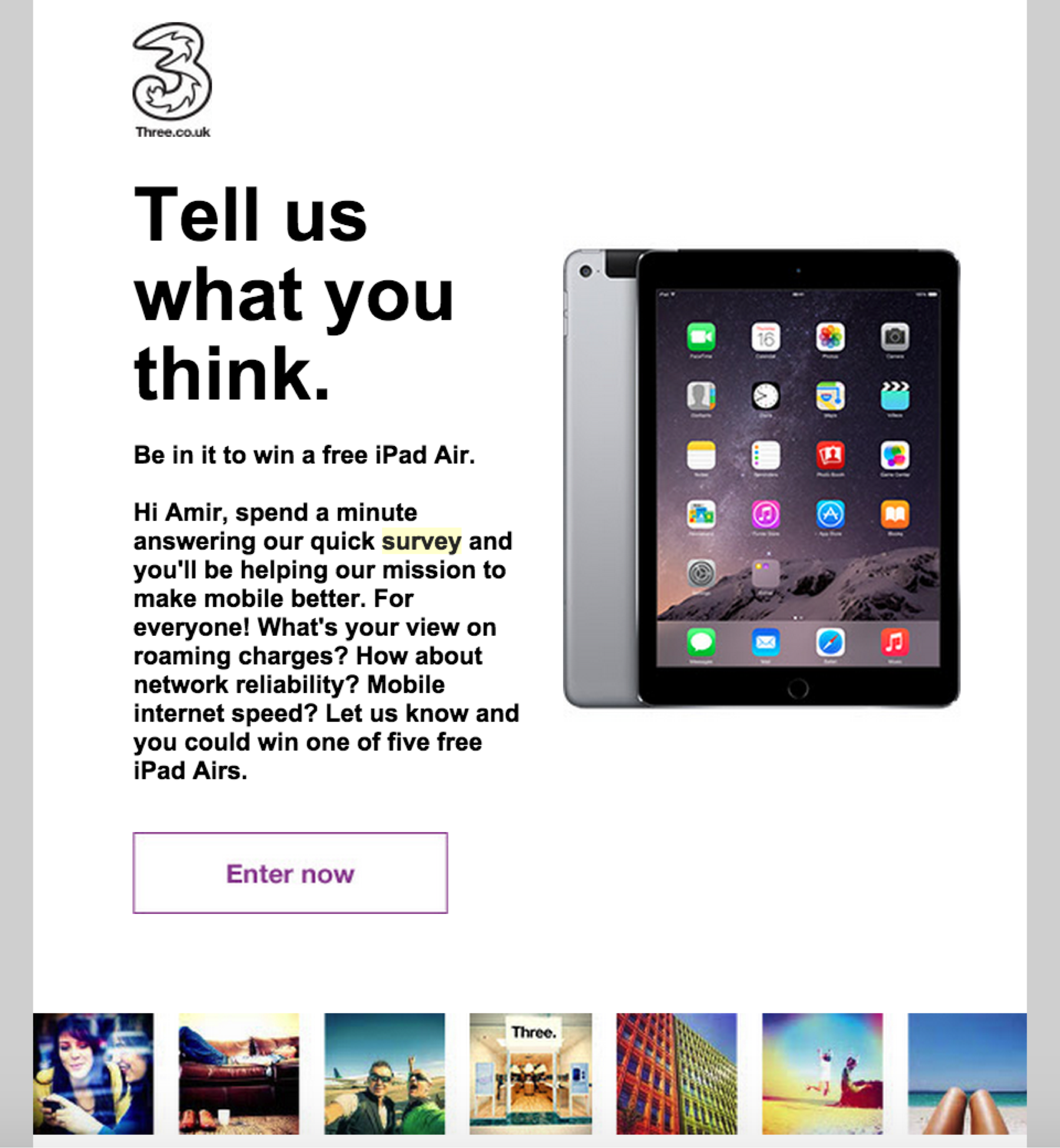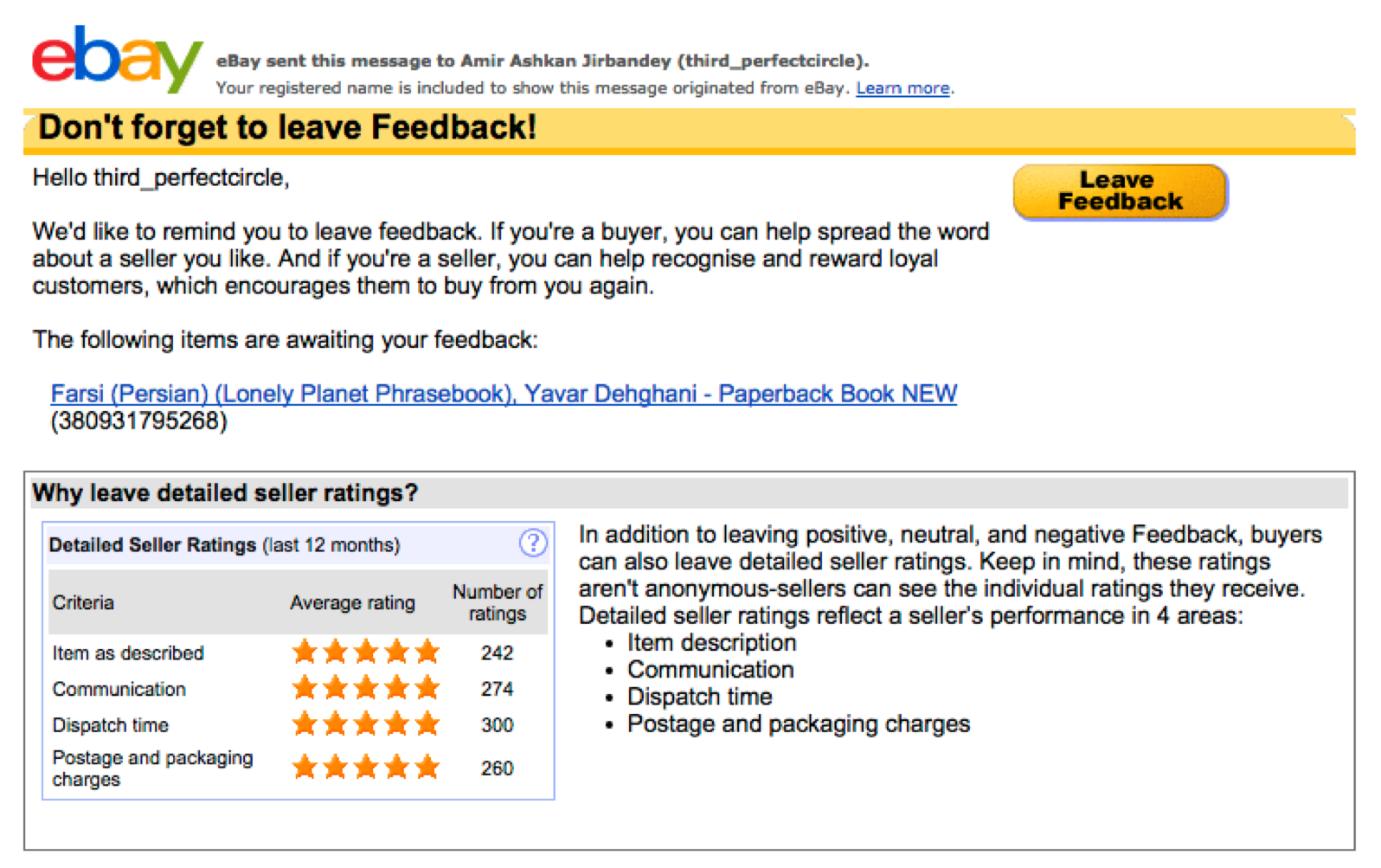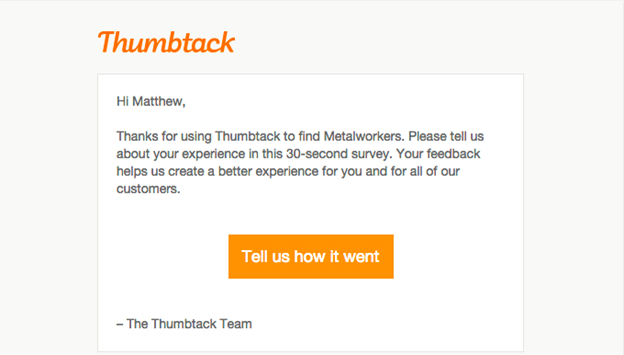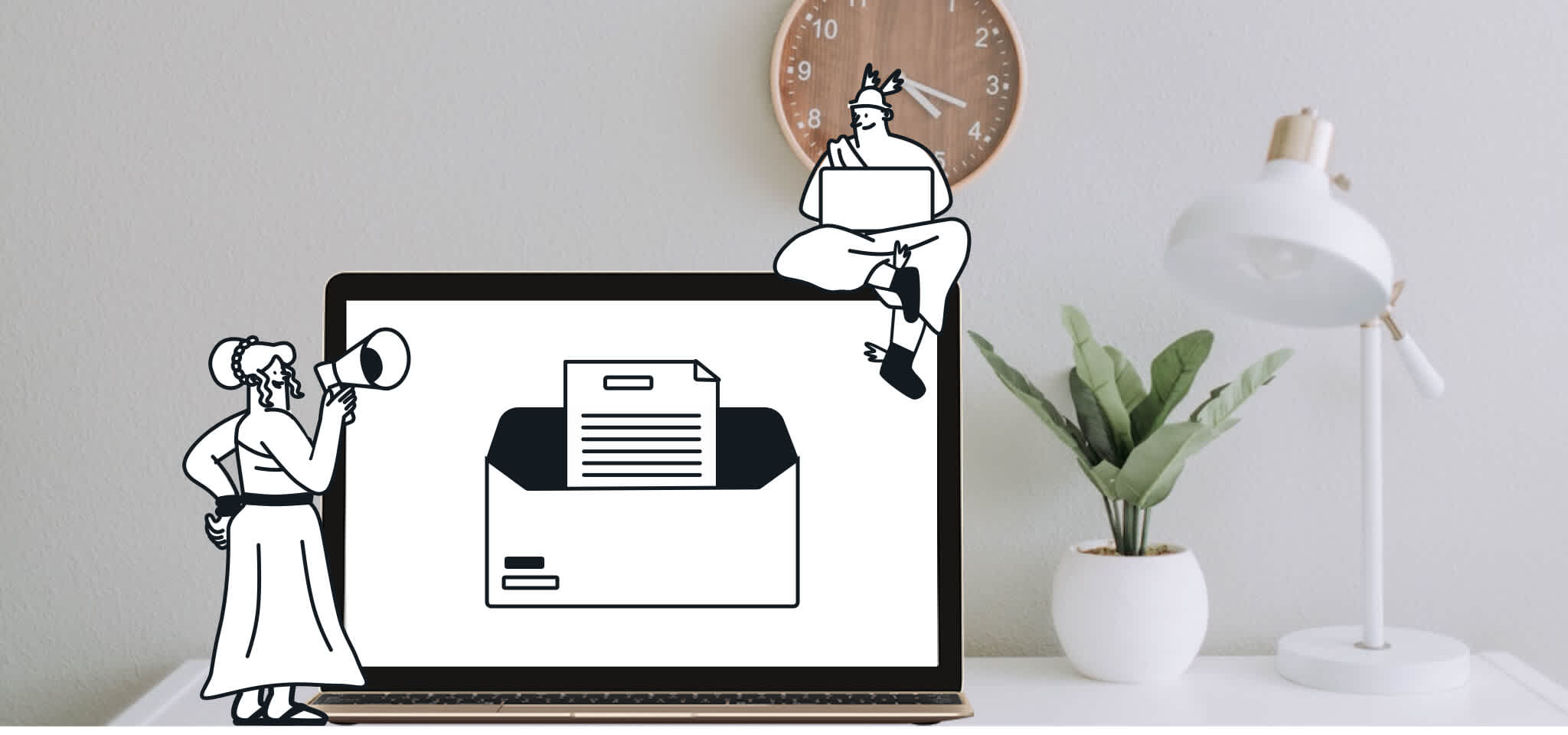Home
The Mailjet Blog
Email best practices
Supercharge Your Business With These Customer Feedback Email Strategies
Email best practices
Enhance the customer experience with a customer feedback email strategy
There’s a golden rule in business: the customer is always right. But what exactly do they think of your services? They’ve chosen your business, and now it’s time to find out why. We’re talking about the importance of customer feedback.

PUBLISHED ON
You can gather customer feedback through SMS, social media, or even through feedback forms on your website. However, doing so via email has a few additional advantages.
Firstly, it’s economical. Unlike phone surveys, there are no direct costs associated with dialing numbers or paying for call time. Email surveys can also be automated, reducing the need for manual data entry and analysis.
Secondly, customers can easily fill out a form on the go on their phones or from their desktop computers – whichever they prefer. You’re reaching customers on the channel they prefer for talking to businesses, so you’re more likely to get responses. There are a whole host of additional advantages of a customer feedback email strategy which we’ll go ahead and explore in more detail throughout the article.
Table of content
Quick and easy to run
They open the door for more honest answers
Convenient for customers
Email is a scalable channel
Support feedback
Customer survey
User interaction
Simple customer referendum
Product and services review
1. Use a casual introduction
2. Say how long your survey will take
3. Show how much you value their feedback
4. Place your links conspicuously
5. Send the preemptive thank you
Shopify
Thumbtack
Airbnb
How customer feedback emails help your business
Let’s explore some of the other proven benefits of gathering customer feedback via email, and why it’s a tried-and-true tactic that email marketers use to help grow and improve their businesses.
Quick and easy to run
One of the most obvious benefits of email surveys is how easy they are to run. Senders can use email marketing software to create and send out customized feedback forms which can be scheduled and sent out at a regular cadence, automatically, and triggered by some action from a new customer or even distributed manually.
Customer feedback emails aren’t just helpful for businesses, but their usefulness and practicality also benefit the customer. Their simplicity means customers simply need to open the email and respond, with the gathered data used to actively bring about change which is mutually beneficial for both parties.
They open the door for more honest answers
With email surveys, customers feel more comfortable providing their honest take on their relationship with your business because they can fill out your survey without you watching over their shoulder.
Not saying that’s what you’re doing, but when they can fill out these surveys without you being present, they’re likely to be franker, giving you more opportunities to improve when you receive their answers.
Convenient for customers
By providing customers with a link to your questionnaire, they can open and fill it out at their convenience. If you were to use another popular channel such as via a phone call, they might feel pressured into a response. An email survey allows for more thoughtful and detailed feedback.
Email is a scalable channel
The great thing about email is that it can be sent to a large segment of your audience efficiently, cost-effectively, and at a massive scale. Again, if you were to try gaining customer feedback through other channels it can become grueling and time-consuming.
What’s more, ESPs (email service providers) are easily integrated with CRM (customer relationship management) software, meaning the gathered data can be immediately used to uncover valuable insights into customer satisfaction, preferences, and pain points.
Examples of customer feedback emails
Now we’ve run through some of the benefits, here are some ideas for setting up feedback emails for customers.
Support feedback
One area you could try gathering feedback is after a customer uses a company’s support system. This is a great way to start a new chapter in the relationship with your customers, as they would usually contact your support team when they’re having a problem with your product or service.
Here’s an excellent example of just that in action when we bought some new headphones online, but our order never arrived.

Customer support email about a raised ticked.
Customer survey
You should try to engage your customers through a survey to hear what they have to say about your product or service. To collect a more significant sample of replies and make your customers feel heard, try including raffle prizes to incentivize your customers to give feedback. Here’s a great example by Three, a mobile network company.

Example of a survey email that involves a competition.
User interaction
Take a look at the bottom of this email feedback campaign. Here, Uber asks the user to provide feedback, “What’s your next destination?” within the email. Obviously, this is an animated GIF that links to an external site. However, it’s very clever to receive feedback and drive-up response rates.

An email from Uber for collecting feedback
Simple customer referendum
You may want to use a “Yes” or “No” based question to receive feedback from your customers. It takes them one simple click, so you’re more likely to get responses. You can store answers collected from these campaigns and use them to segment customers by behavior and preferences. In this case, British Gas would segment their data based on their customers showing their loyalty to the brand. The segment of customers who choose “No” would potentially receive new email marketing material, so British Gas could win them back.

British Gas uses feedback emails for segmentation.
Product and services review
Finally, you can use email feedback to prompt users to leave feedback on websites based on their purchases or services. Customer reviews are precious, and online businesses are looking even closer at how they can engage with customers to leave quality reviews more often. Here’s how Airbnb and eBay engage customers through triggered emails after their purchase:

eBay prompts users to leave reviews on its site.
How to improve your customer email feedback
Have we sold you on the importance of creating customer feedback emails for your business? Good. Now, if you’re not sure where to start, consider the following steps, and you’ll be on your way to collecting customer feedback to help your business grow.
1. Use a casual introduction
As the Shakespearean idiom states, brevity is the soul of wit. This suggests a method to successfully get feedback from your business clients. By casually introducing yourself with a “hey,” and then writing a concise email, you’re sure to keep your customers engaged on a personal level. This helps establish why you want them to fill out the survey.
Customers appreciate that transparency, and when they feel like you care about them, this strengthens your relationship. Plus, people are busy, and they don’t want to feel like they’re about to sink a bunch of time into a pointless survey.
2. Say how long your survey will take
After articulating why you want to gauge customer satisfaction, it’s essential to tell them how much time the survey will take. Being upfront with your customers will allow them to decide for themselves if they have time to fill out a survey.
If they’re busy, they can just complete it later. Managing expectations is another excellent way to build customer loyalty. You can even lead with this information in your email subject line.
3. Show how much you value their feedback
We previously mentioned the importance of being transparent with your customers, and we cannot stress the importance of telling your customers how much your feedback means to you.
For instance, you could say to your clients that their feedback will directly result in improved products and services in the future. To further demonstrate how much you value their comments, you could offer some promotion or discount upon completion of the email survey in exchange for their time.
4. Place your links conspicuously
You’ve sent that feedback email, but your click-through rate (CTR) is low. Before you start scratching your head, did you consider the cause could be that your survey link is hidden at the bottom of your email?
The best practice for inserting links and driving up key performance indicators (KPIs) like CTRs is placing your survey link in a prominent, conspicuous spot. Don’t be shy now. Make that link in size 22 and brightly colored. You want that thing to pop. Consider using action words to entice recipients to engage with that clear call-to-action (CTA).
5. Send the preemptive thank you
In email marketing, chivalry is alive and well. So, mind your manners and be polite with your customers. Thank them in advance for the time they’ll take out of their days to fill out your email survey. Speaking of messaging in advance, mention that you’re looking forward to hearing their thoughts in response to your email survey. That’ll further show how much their critique means to you.
3 email survey feedback examples
Now that we’ve given you a better sense of email survey feedback and why it matters, it’s time to get into three email survey feedback examples.
Shopify
Customers will be far more likely to fill out a survey if they can clearly see how doing so will provide them with value. It’s crucial to show customers how filling out your survey doesn’t just benefit the business; it also benefits the customer. Shopify does an excellent job at this:

Explain why customers should fill out a survey. (Source: Herothemes)
We think they did a great job here because:
They precisely tell their audience their purpose for sending this survey: Shopify wants to build features that can help its retail businesses.
The customer will feel a sense of collaboration. They see that Shopify will develop features informed by their feedback and look forward to seeing their ideas being implemented.
Someone who provides email feedback to Shopify feels like they’re doing them a favor. Shopify’s email will make them feel like the onus is on them to suggest improvements or features that can directly help their business.
Thumbtack
Consider starting with a salutation template if you’re unsure what angle to take with your email surveys. As we’ve mentioned above, there’s nothing wrong with a short and sweet, personable message to start a conversation and gently nudge your audience toward clicking your survey link.
Take a look at this example from Thumbtack:

An email from Thumbtack asking for feedback.
We think they did a great job here because:
They keep things simple and concise.
Leading with a personalized greeting like including the customer’s name is a simple way to make customers feel like they’re not just a number. An automation setting on Sinch Mailjet’s platform can help you populate audience members’ first names at the top of your feedback emails.
This email just works. Plus, it’s apparent that Thumbtack wants their customer base to click on that CTA to land on their feedback form.
Airbnb
Airbnb nails setting expectations with their emails. As you can see below, they clearly indicate that their survey will take three minutes to complete:

Airbnb is very specific about the survey process.
Airbnb’s customer feedback email is successful because:
They’re specific about why they want their customer’s opinions and how long their survey will take to complete.
They explain why they’re collecting answers from clients: It’s to improve Airbnb for future guests using their platform for trips.
They have a conspicuously placed survey button, so the recipient knows what the company wants them to do after reading the email.
Depending on your standards, three minutes might seem long or short, but Airbnb is clearly considering their audience’s time by being upfront about it.
Wrapping up
In the modern digital marketing climate, collecting customer reactions to your products or services is a crucial component of improving the quality and standard of your business. After all, any successful business professional will tell you that the job doesn’t end after a purchase is made.
It’s essential to collect an evaluation from the purchaser to understand what the customer experience felt like. Once you have this invaluable information, you can apply it to your future marketing strategies, products, and services.
***
This is an updated version of the article “5 ways to turn email feedback into a two way conversation“, by Amir Jirbandey published on the Mailjet blog in 2015.








